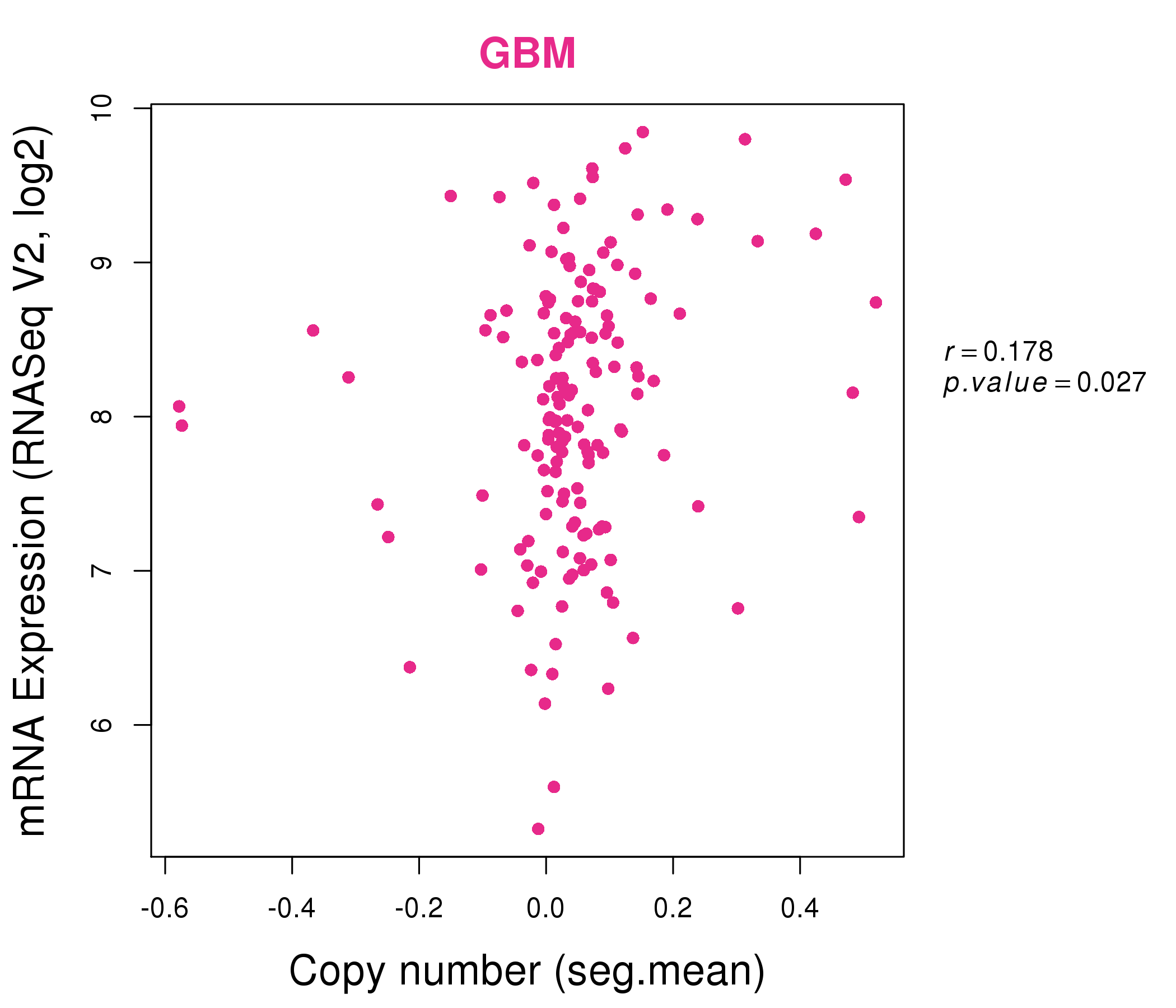|
|||||||||||||||||||||||||||||||||||||||||||||||||||||||||||||||||||||||||||||||||||||||||||||||||||||||||||||||||||||||||||||||||||||||||||||||||||||||||||||||||||||||||||||||||||||||||||||||||||||||||||||||||||||||||||||||||||||||||||||||||||||||||||||||||||||||||||||||||||||||||||||||||||||||||||||||||||||||||||||||||||||||||||||||||||||||||||||||||||||
| |
| Phenotypic Information (metabolism pathway, cancer, disease, phenome) |
| |
| |
| Gene-Gene Network Information: Co-Expression Network, Interacting Genes & KEGG |
| |
|
| Gene Summary for ACACB |
| Top |
| Phenotypic Information for ACACB(metabolism pathway, cancer, disease, phenome) |
| Cancer | CGAP: ACACB |
| Familial Cancer Database: ACACB | |
| * This gene is included in those cancer gene databases. |
|
|
|
|
|
|
| |||||||||||||||||||||||||||||||||||||||||||||||||||||||||||||||||||||||||||||||||||||||||||||||||||||||||||||||||||||||||||||||||||||||||||||||||||||||||||||||||||||||||||||||||||||||||||||||||||||||||||||||||||||||||||||||||||||||||||||||||||||||||||||||||||||||||||||||||||||||||||||||||||||||||||||||||||||||||||||||||||||||||||||||||||||||||||||||
Oncogene 1 | Significant driver gene in | ||||||||||||||||||||||||||||||||||||||||||||||||||||||||||||||||||||||||||||||||||||||||||||||||||||||||||||||||||||||||||||||||||||||||||||||||||||||||||||||||||||||||||||||||||||||||||||||||||||||||||||||||||||||||||||||||||||||||||||||||||||||||||||||||||||||||||||||||||||||||||||||||||||||||||||||||||||||||||||||||||||||||||||||||||||||||||||||||||||
| cf) number; DB name 1 Oncogene; http://nar.oxfordjournals.org/content/35/suppl_1/D721.long, 2 Tumor Suppressor gene; https://bioinfo.uth.edu/TSGene/, 3 Cancer Gene Census; http://www.nature.com/nrc/journal/v4/n3/abs/nrc1299.html, 4 CancerGenes; http://nar.oxfordjournals.org/content/35/suppl_1/D721.long, 5 Network of Cancer Gene; http://ncg.kcl.ac.uk/index.php, 1Therapeutic Vulnerabilities in Cancer; http://cbio.mskcc.org/cancergenomics/statius/ |
| KEGG_PYRUVATE_METABOLISM KEGG_PROPANOATE_METABOLISM REACTOME_INTEGRATION_OF_ENERGY_METABOLISM REACTOME_METABOLISM_OF_LIPIDS_AND_LIPOPROTEINS | |
| OMIM | |
| Orphanet | |
| Disease | KEGG Disease: ACACB |
| MedGen: ACACB (Human Medical Genetics with Condition) | |
| ClinVar: ACACB | |
| Phenotype | MGI: ACACB (International Mouse Phenotyping Consortium) |
| PhenomicDB: ACACB | |
| Mutations for ACACB |
| * Under tables are showing count per each tissue to give us broad intuition about tissue specific mutation patterns.You can go to the detailed page for each mutation database's web site. |
| - Statistics for Tissue and Mutation type | Top |
 |
| - For Inter-chromosomal Variations |
| * Inter-chromosomal variantions includes 'interchromosomal amplicon to amplicon', 'interchromosomal amplicon to non-amplified dna', 'interchromosomal insertion', 'Interchromosomal unknown type'. |
 |
| - For Intra-chromosomal Variations |
| * Intra-chromosomal variantions includes 'intrachromosomal amplicon to amplicon', 'intrachromosomal amplicon to non-amplified dna', 'intrachromosomal deletion', 'intrachromosomal fold-back inversion', 'intrachromosomal inversion', 'intrachromosomal tandem duplication', 'Intrachromosomal unknown type', 'intrachromosomal with inverted orientation', 'intrachromosomal with non-inverted orientation'. |
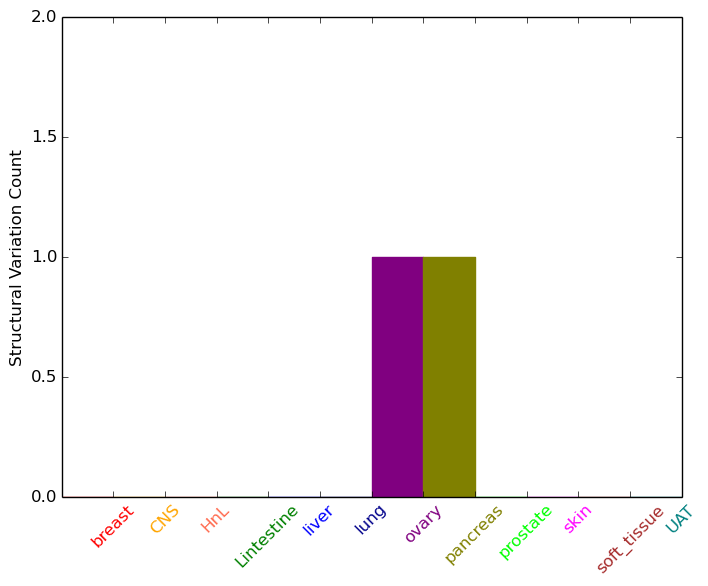 |
| Sample | Symbol_a | Chr_a | Start_a | End_a | Symbol_b | Chr_b | Start_b | End_b |
| ovary | ACACB | chr12 | 109612529 | 109612729 | chr12 | 109163338 | 109163538 | |
| pancreas | ACACB | chr12 | 109605366 | 109605386 | ACACB | chr12 | 109605598 | 109605618 |
| cf) Tissue number; Tissue name (1;Breast, 2;Central_nervous_system, 3;Haematopoietic_and_lymphoid_tissue, 4;Large_intestine, 5;Liver, 6;Lung, 7;Ovary, 8;Pancreas, 9;Prostate, 10;Skin, 11;Soft_tissue, 12;Upper_aerodigestive_tract) |
| * From mRNA Sanger sequences, Chitars2.0 arranged chimeric transcripts. This table shows ACACB related fusion information. |
| ID | Head Gene | Tail Gene | Accession | Gene_a | qStart_a | qEnd_a | Chromosome_a | tStart_a | tEnd_a | Gene_a | qStart_a | qEnd_a | Chromosome_a | tStart_a | tEnd_a |
| BM989099 | ACACB | 16 | 143 | 12 | 109705904 | 109706031 | CTDSP1 | 144 | 435 | 2 | 219270373 | 219270664 | |
| BF375856 | PANK2 | 105 | 228 | 20 | 3873479 | 3873602 | ACACB | 211 | 392 | 12 | 109625921 | 109629547 | |
| BF822123 | ACACB | 1 | 105 | 12 | 109626548 | 109626653 | ACACB | 101 | 398 | 12 | 109626532 | 109627157 | |
| Top |
| Mutation type/ Tissue ID | brca | cns | cerv | endome | haematopo | kidn | Lintest | liver | lung | ns | ovary | pancre | prost | skin | stoma | thyro | urina | |||
| Total # sample | 1 | |||||||||||||||||||
| GAIN (# sample) | 1 | |||||||||||||||||||
| LOSS (# sample) |
| cf) Tissue ID; Tissue type (1; Breast, 2; Central_nervous_system, 3; Cervix, 4; Endometrium, 5; Haematopoietic_and_lymphoid_tissue, 6; Kidney, 7; Large_intestine, 8; Liver, 9; Lung, 10; NS, 11; Ovary, 12; Pancreas, 13; Prostate, 14; Skin, 15; Stomach, 16; Thyroid, 17; Urinary_tract) |
| Top |
|
 |
| Top |
| Stat. for Non-Synonymous SNVs (# total SNVs=207) | (# total SNVs=74) |
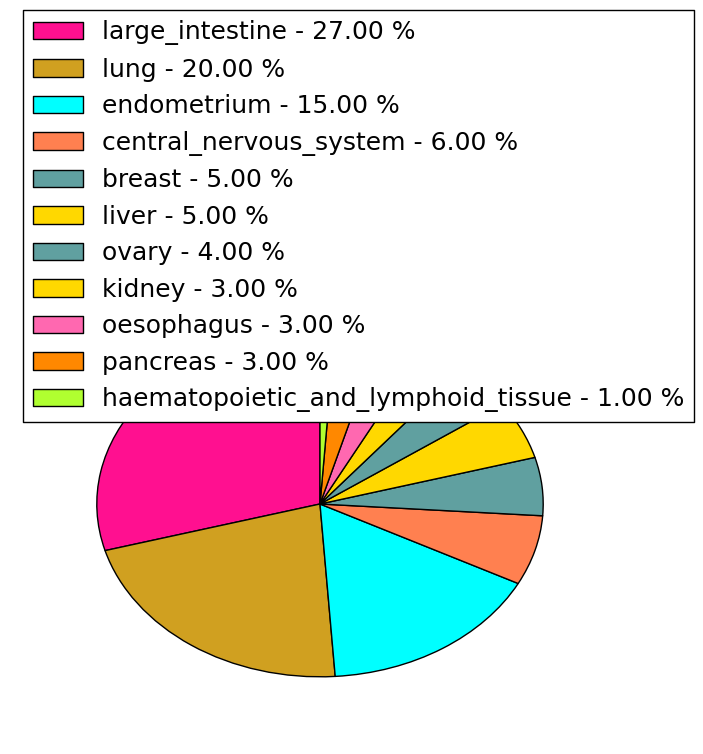 |  |
(# total SNVs=2) | (# total SNVs=1) |
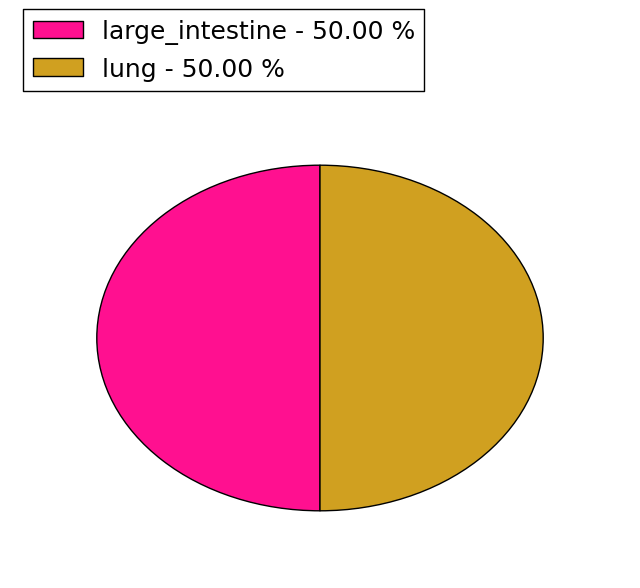 | 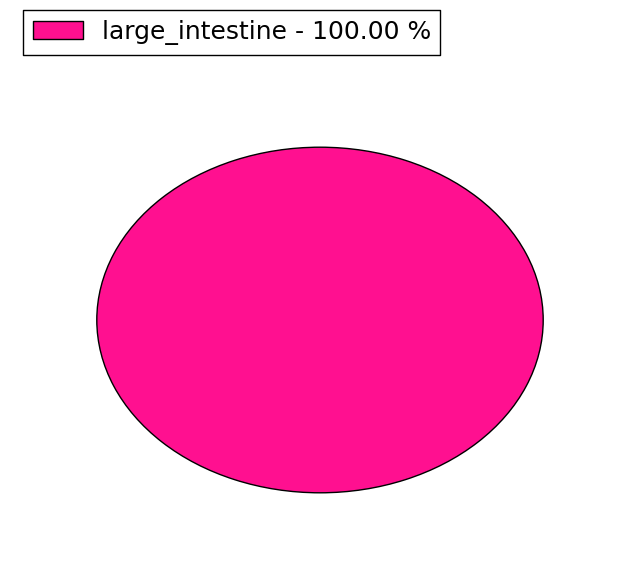 |
| Top |
| * When you move the cursor on each content, you can see more deailed mutation information on the Tooltip. Those are primary_site,primary_histology,mutation(aa),pubmedID. |
| GRCh37 position | Mutation(aa) | Unique sampleID count |
| chr12:109613968-109613968 | p.R446I | 4 |
| chr12:109702924-109702924 | p.E2318* | 3 |
| chr12:109617881-109617881 | p.A603T | 3 |
| chr12:109625967-109625967 | p.S715L | 3 |
| chr12:109605836-109605836 | p.A308P | 3 |
| chr12:109610082-109610082 | p.A346A | 2 |
| chr12:109660682-109660682 | p.M1253V | 2 |
| chr12:109687895-109687895 | p.V1926F | 2 |
| chr12:109644522-109644522 | p.P974L | 2 |
| chr12:109696853-109696853 | p.R2146W | 2 |
| Top |
|
 |
| Point Mutation/ Tissue ID | 1 | 2 | 3 | 4 | 5 | 6 | 7 | 8 | 9 | 10 | 11 | 12 | 13 | 14 | 15 | 16 | 17 | 18 | 19 | 20 |
| # sample | 7 | 9 | 2 | 35 | 8 | 15 | 6 | 1 | 24 | 11 | 7 | 1 | 24 | 20 | 2 | 28 | ||||
| # mutation | 6 | 9 | 2 | 37 | 8 | 19 | 6 | 1 | 34 | 14 | 7 | 1 | 29 | 29 | 2 | 46 | ||||
| nonsynonymous SNV | 4 | 8 | 2 | 32 | 7 | 11 | 4 | 18 | 7 | 6 | 1 | 16 | 21 | 1 | 29 | |||||
| synonymous SNV | 2 | 1 | 5 | 1 | 8 | 2 | 1 | 16 | 7 | 1 | 13 | 8 | 1 | 17 |
| cf) Tissue ID; Tissue type (1; BLCA[Bladder Urothelial Carcinoma], 2; BRCA[Breast invasive carcinoma], 3; CESC[Cervical squamous cell carcinoma and endocervical adenocarcinoma], 4; COAD[Colon adenocarcinoma], 5; GBM[Glioblastoma multiforme], 6; Glioma Low Grade, 7; HNSC[Head and Neck squamous cell carcinoma], 8; KICH[Kidney Chromophobe], 9; KIRC[Kidney renal clear cell carcinoma], 10; KIRP[Kidney renal papillary cell carcinoma], 11; LAML[Acute Myeloid Leukemia], 12; LUAD[Lung adenocarcinoma], 13; LUSC[Lung squamous cell carcinoma], 14; OV[Ovarian serous cystadenocarcinoma ], 15; PAAD[Pancreatic adenocarcinoma], 16; PRAD[Prostate adenocarcinoma], 17; SKCM[Skin Cutaneous Melanoma], 18:STAD[Stomach adenocarcinoma], 19:THCA[Thyroid carcinoma], 20:UCEC[Uterine Corpus Endometrial Carcinoma]) |
| Top |
| * We represented just top 10 SNVs. When you move the cursor on each content, you can see more deailed mutation information on the Tooltip. Those are primary_site, primary_histology, mutation(aa), pubmedID. |
| Genomic Position | Mutation(aa) | Unique sampleID count |
| chr12:109613968 | p.R89K | 3 |
| chr12:109577476 | p.R446I | 3 |
| chr12:109660704 | p.G1124S | 2 |
| chr12:109629448 | p.P2188P | 2 |
| chr12:109654442 | p.L826F | 2 |
| chr12:109680382 | p.V320I | 2 |
| chr12:109631529 | p.M1253V | 2 |
| chr12:109614053 | p.P474P | 2 |
| chr12:109675151 | p.P1721P | 2 |
| chr12:109623543 | p.M1253I | 2 |
| * Copy number data were extracted from TCGA using R package TCGA-Assembler. The URLs of all public data files on TCGA DCC data server were gathered on Jan-05-2015. Function ProcessCNAData in TCGA-Assembler package was used to obtain gene-level copy number value which is calculated as the average copy number of the genomic region of a gene. |
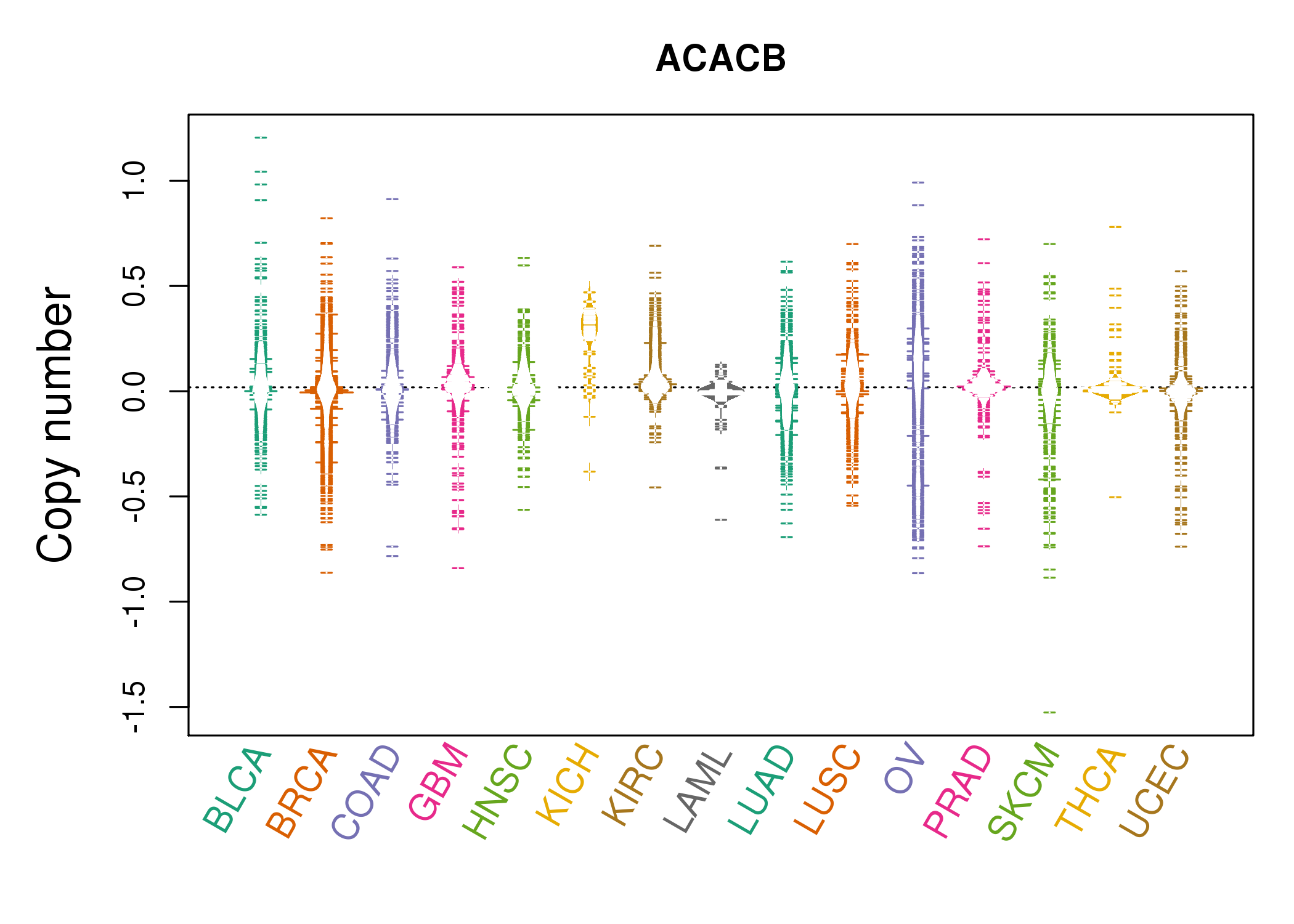 |
| cf) Tissue ID[Tissue type]: BLCA[Bladder Urothelial Carcinoma], BRCA[Breast invasive carcinoma], CESC[Cervical squamous cell carcinoma and endocervical adenocarcinoma], COAD[Colon adenocarcinoma], GBM[Glioblastoma multiforme], Glioma Low Grade, HNSC[Head and Neck squamous cell carcinoma], KICH[Kidney Chromophobe], KIRC[Kidney renal clear cell carcinoma], KIRP[Kidney renal papillary cell carcinoma], LAML[Acute Myeloid Leukemia], LUAD[Lung adenocarcinoma], LUSC[Lung squamous cell carcinoma], OV[Ovarian serous cystadenocarcinoma ], PAAD[Pancreatic adenocarcinoma], PRAD[Prostate adenocarcinoma], SKCM[Skin Cutaneous Melanoma], STAD[Stomach adenocarcinoma], THCA[Thyroid carcinoma], UCEC[Uterine Corpus Endometrial Carcinoma] |
| Top |
| Gene Expression for ACACB |
| * CCLE gene expression data were extracted from CCLE_Expression_Entrez_2012-10-18.res: Gene-centric RMA-normalized mRNA expression data. |
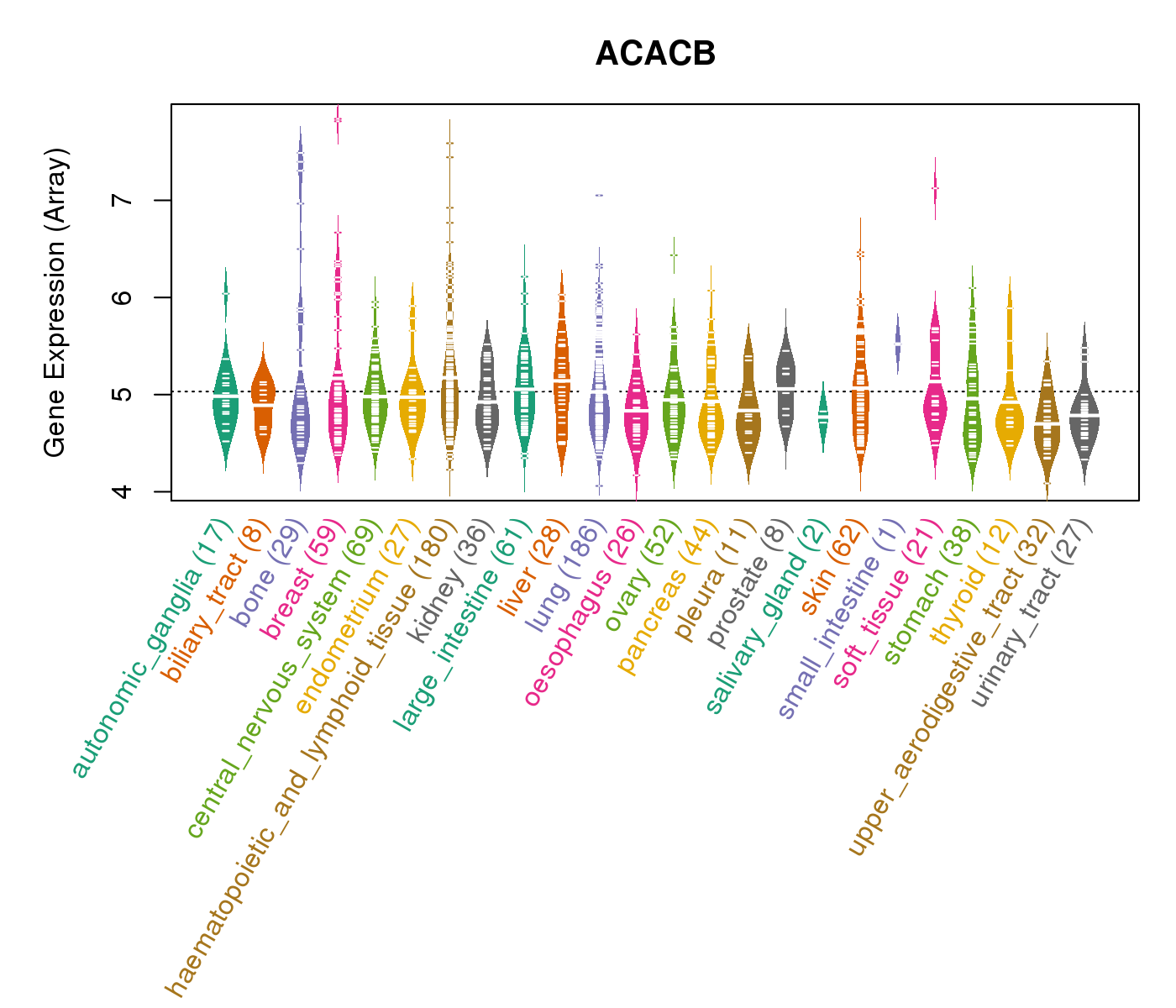 |
| * Normalized gene expression data of RNASeqV2 was extracted from TCGA using R package TCGA-Assembler. The URLs of all public data files on TCGA DCC data server were gathered at Jan-05-2015. Only eight cancer types have enough normal control samples for differential expression analysis. (t test, adjusted p<0.05 (using Benjamini-Hochberg FDR)) |
 |
| Top |
| * This plots show the correlation between CNV and gene expression. |
: Open all plots for all cancer types
 |
|
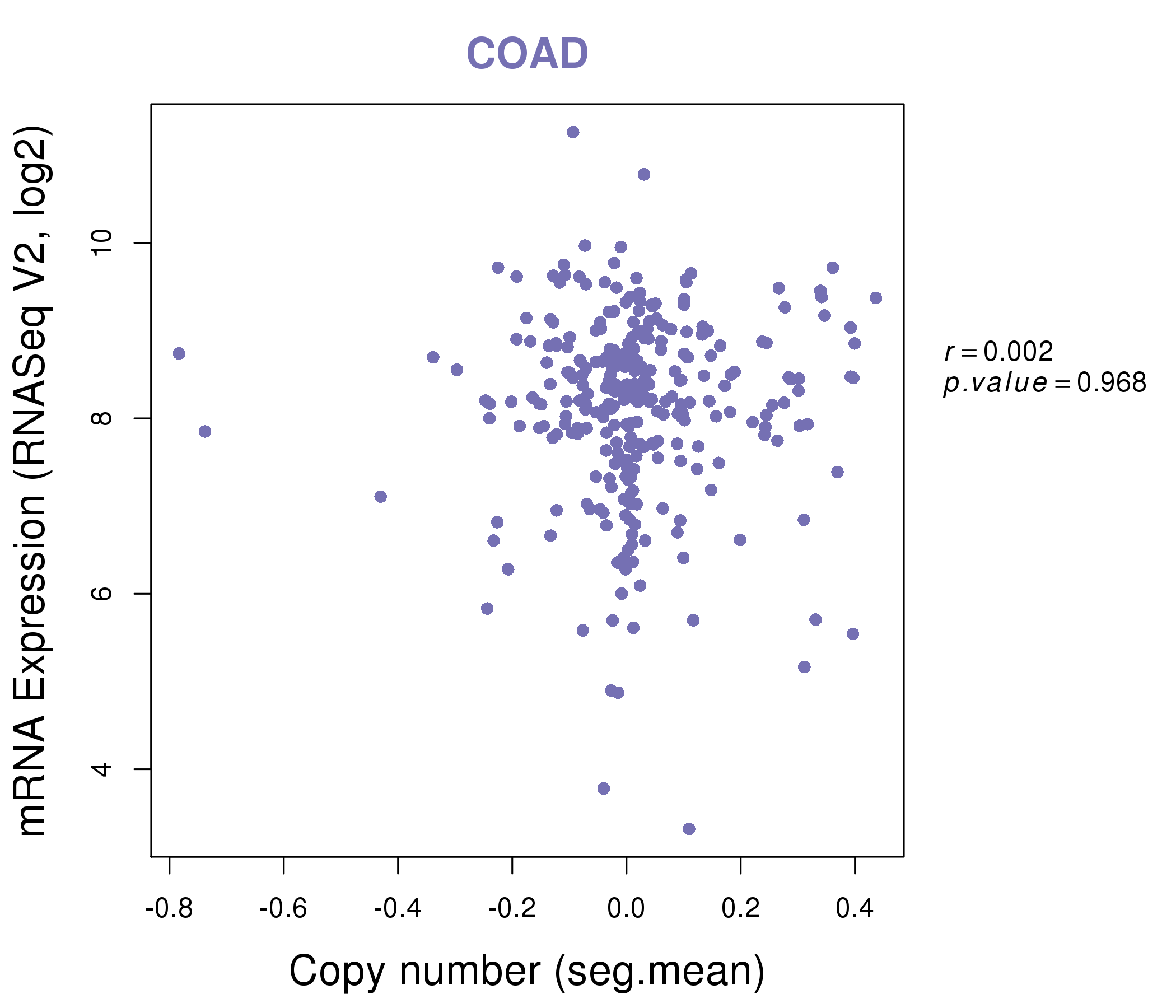 |
|
| Top |
| Gene-Gene Network Information |
| * Co-Expression network figures were drawn using R package igraph. Only the top 20 genes with the highest correlations were shown. Red circle: input gene, orange circle: cell metabolism gene, sky circle: other gene |
: Open all plots for all cancer types
 |
| ||||
| ACACB,ACVR1C,ADH1B,ADIPOQ,AOC3,AQP7,AQP7P1, C14orf180,CD300LG,CIDEC,GPAM,GPD1,HEPACAM,KCNIP2, KLB,LIPE,PLIN1,PLIN4,SDPR,SLC19A3,TMEM132C | ABHD15,ACAA2,ACACB,ACVR1C,AQP7,CIDEC,CNTFR, GYG2,LGALS12,MLXIPL,MARC1,OXCT1,PC,PDE1B, PECR,PLA2G16,PNPLA2,PPARG,SLC19A3,TJP2,TMEM132C | ||||
 |
| ||||
| ABCA6,ABCA8,ABCA9,ACACB,ADH1B,AQP7,C7, CD300LG,CIDEA,FABP4,GPIHBP1,GPX3,HEPACAM,KCNIP2, LIFR,NGFR,PLIN1,PLIN4,SCN4A,SEMA3G,TUSC5 | ABCA3,ACACB,AHNAK,COL6A2,CROCCP3,DLG5,EVC, FYCO1,GLI2,IGHMBP2,CTIF,MTCL1,LAMA5,LAMB2, MACF1,MECP2,PKD1,SSC5D,SYNE1,ZFYVE20,ZNF512B |
| * Co-Expression network figures were drawn using R package igraph. Only the top 20 genes with the highest correlations were shown. Red circle: input gene, orange circle: cell metabolism gene, sky circle: other gene |
: Open all plots for all cancer types
| Top |
: Open all interacting genes' information including KEGG pathway for all interacting genes from DAVID
| Top |
| Pharmacological Information for ACACB |
| DB Category | DB Name | DB's ID and Url link |
| * Gene Centered Interaction Network. |
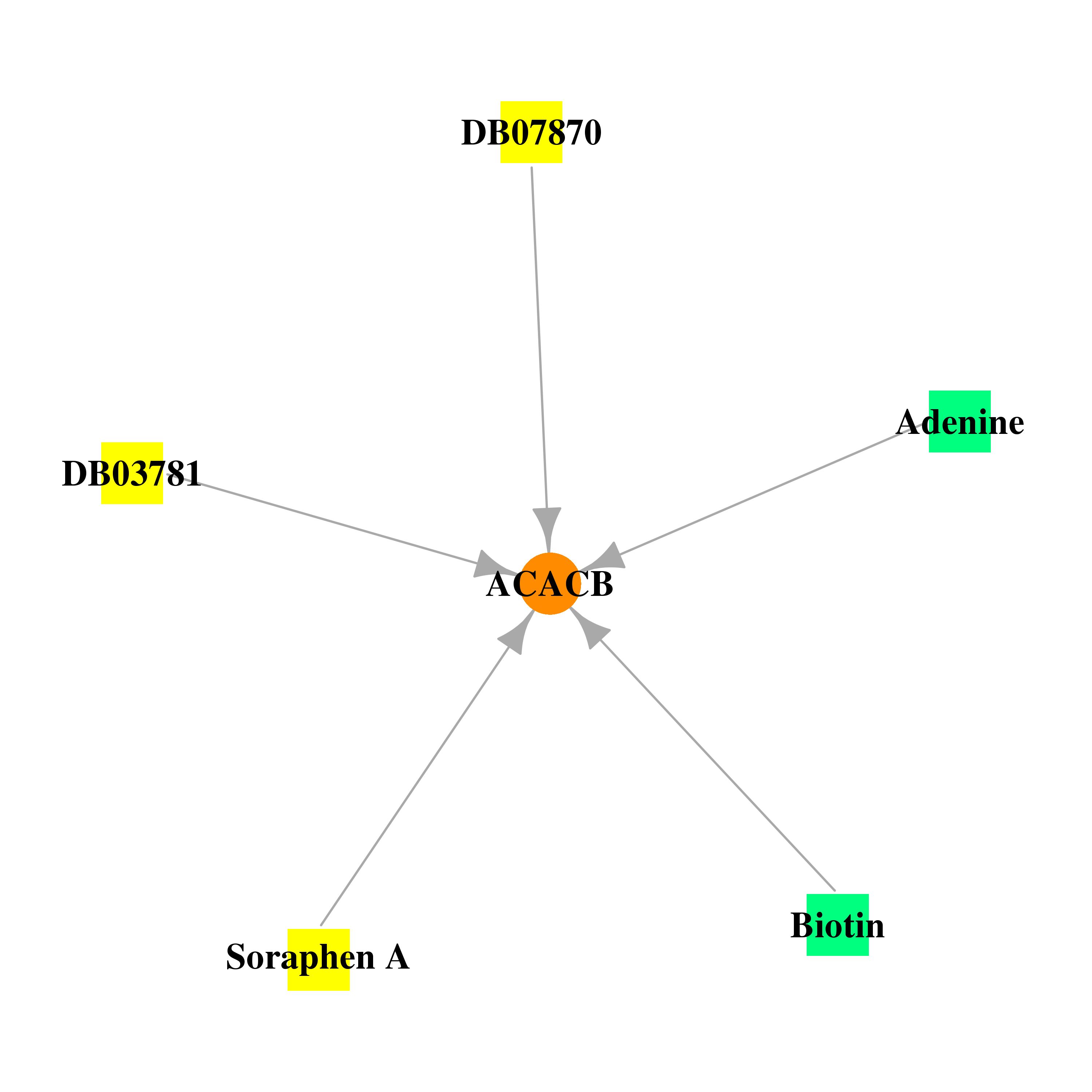 |
| * Drug Centered Interaction Network. |
| DrugBank ID | Target Name | Drug Groups | Generic Name | Drug Centered Network | Drug Structure |
| DB00121 | acetyl-CoA carboxylase beta | approved; nutraceutical | Biotin |  | 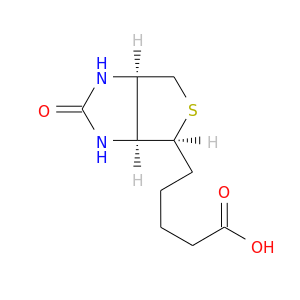 |
| DB00173 | acetyl-CoA carboxylase beta | approved; nutraceutical | Adenine | 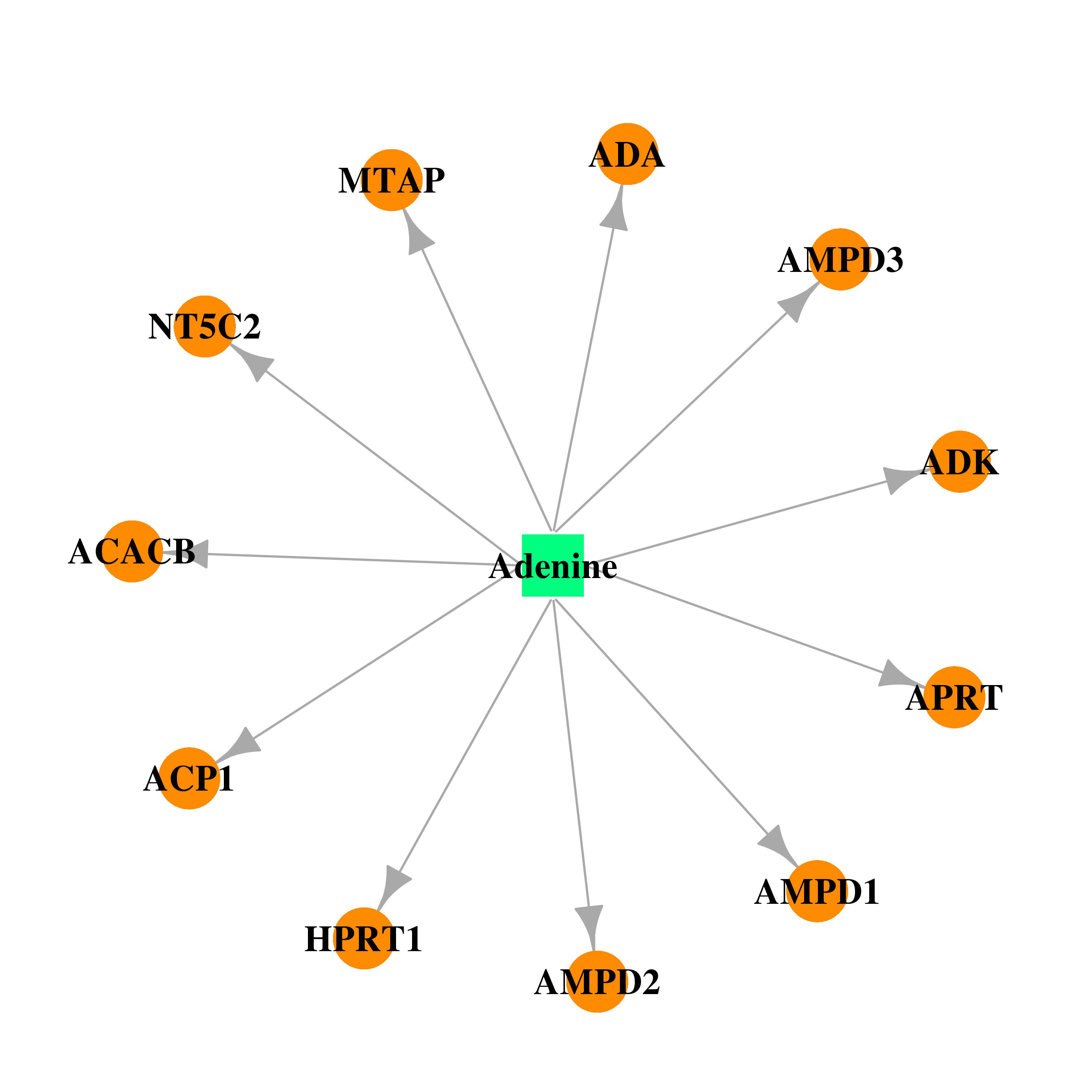 | 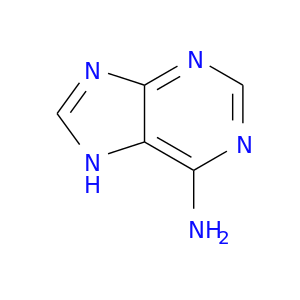 |
| DB02859 | acetyl-CoA carboxylase beta | experimental | Soraphen A | 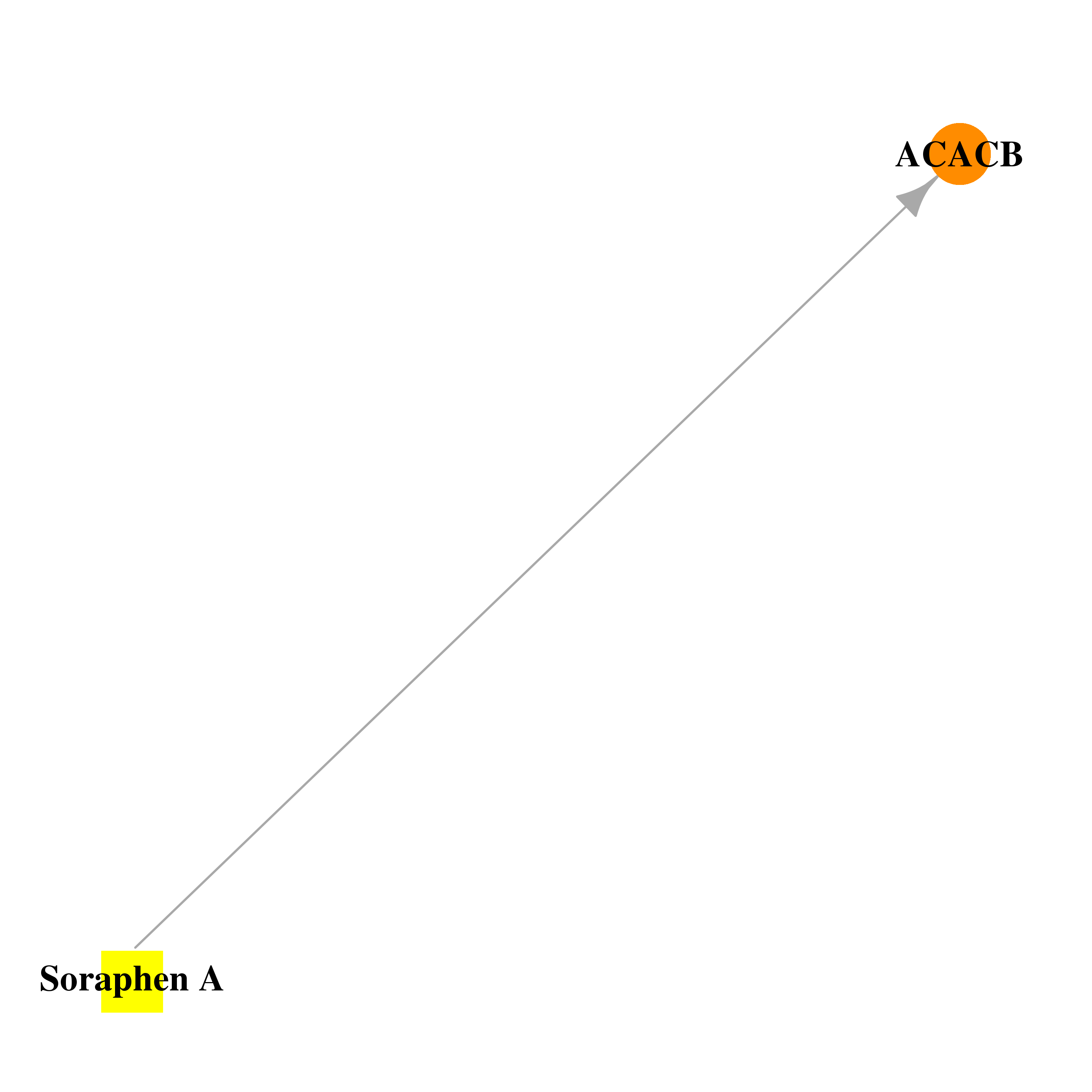 |  |
| DB03781 | acetyl-CoA carboxylase beta | experimental | 2-[4-(2,4-Dichlorophenoxy)Phenoxy]Propanoic Acid |  | 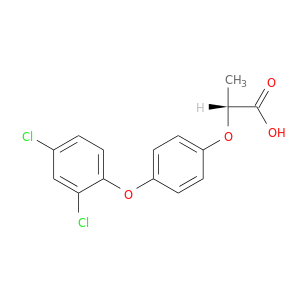 |
| DB07870 | acetyl-CoA carboxylase beta | experimental | (2S)-2-(4-{[3-CHLORO-5-(TRIFLUOROMETHYL)PYRIDIN-2-YL]OXY}PHENOXY)PROPANOIC ACID | 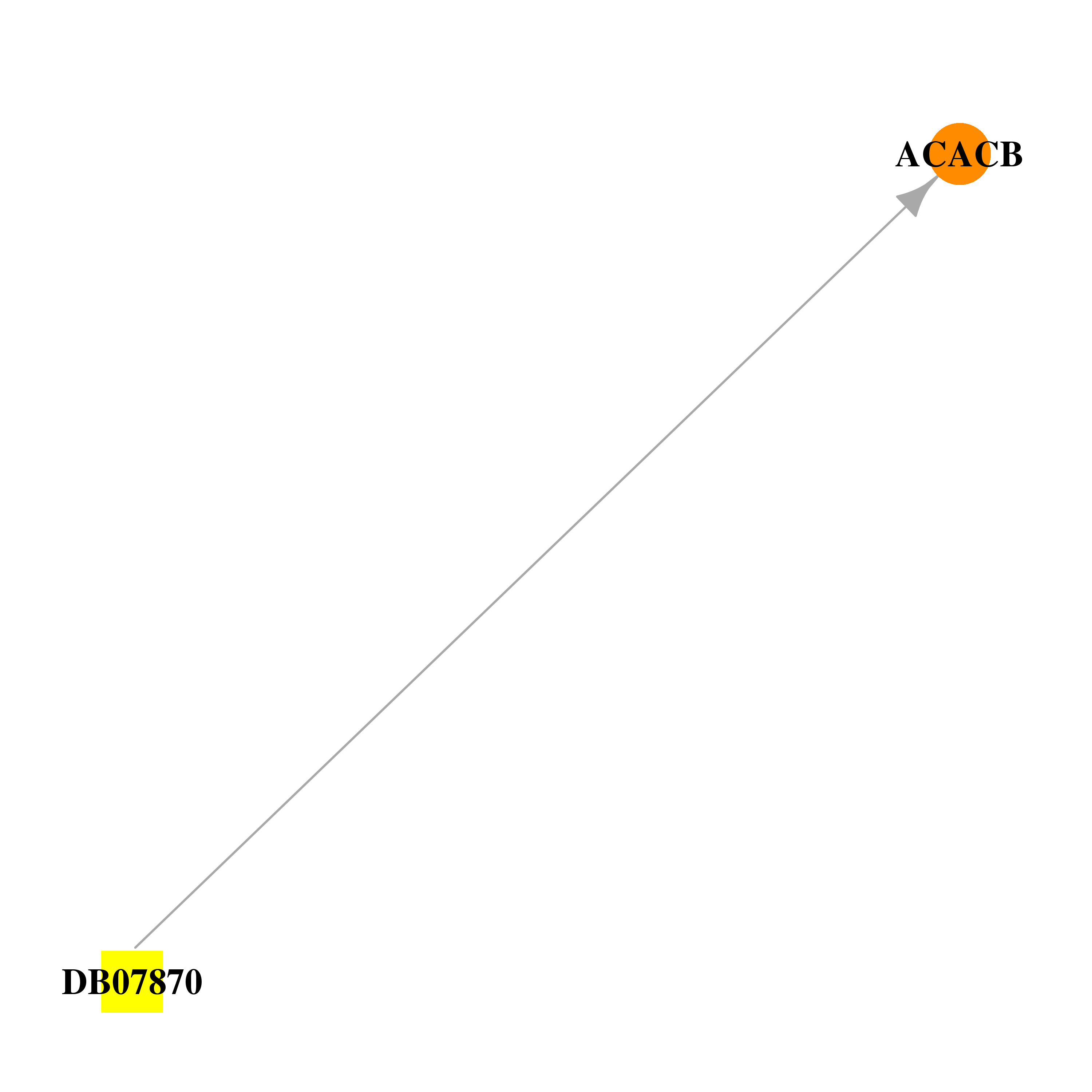 |  |
| Top |
| Cross referenced IDs for ACACB |
| * We obtained these cross-references from Uniprot database. It covers 150 different DBs, 18 categories. http://www.uniprot.org/help/cross_references_section |
: Open all cross reference information
|
Copyright © 2016-Present - The Univsersity of Texas Health Science Center at Houston @ |







